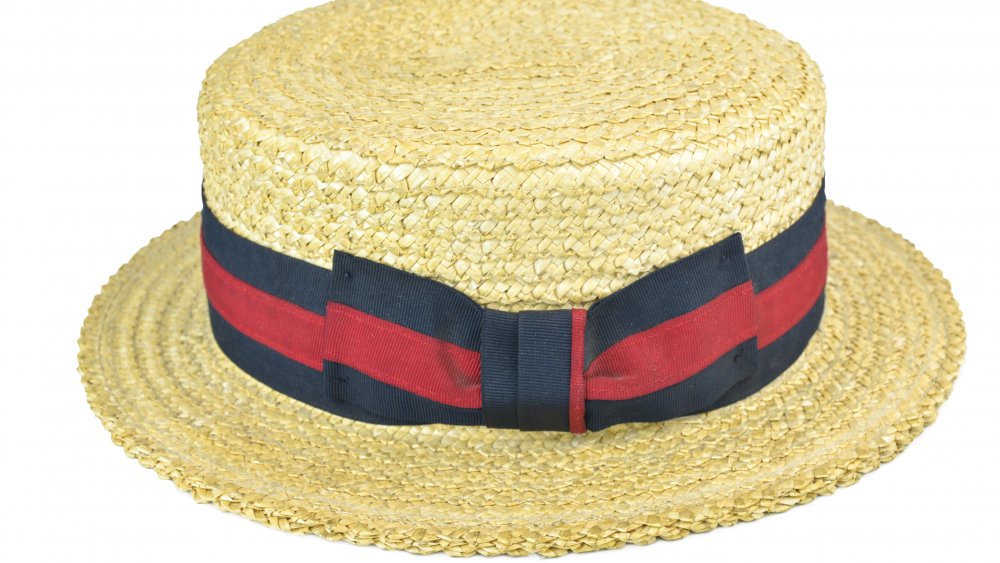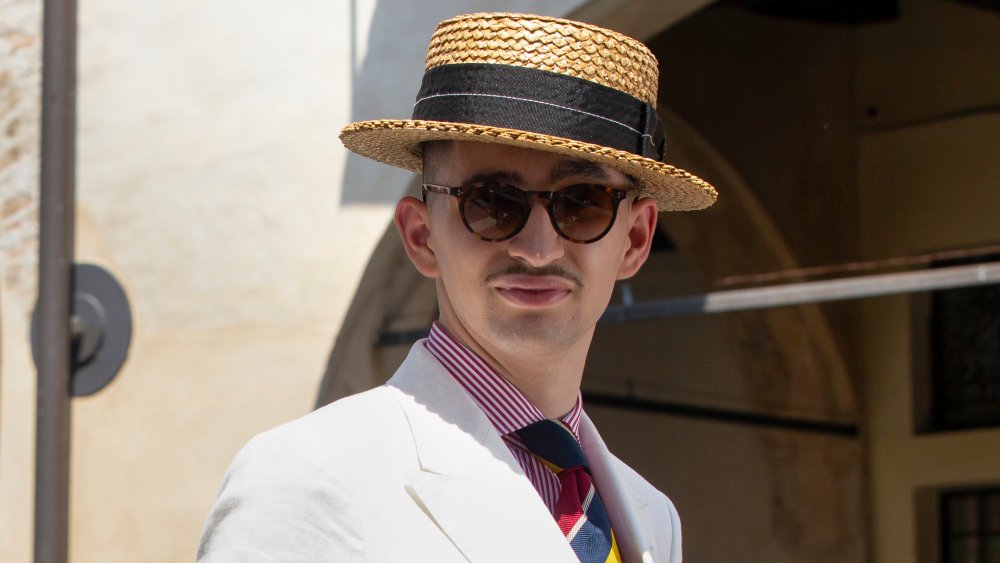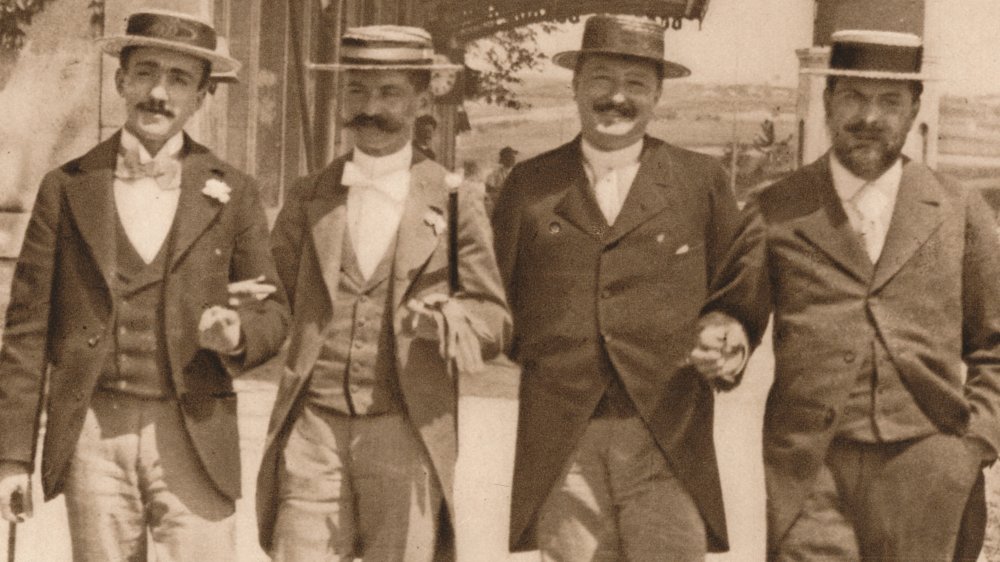The 1922 Riots That Were Started Because Of A Clothing Item
If you look sharp, you feel sharp. So they say. (The question is, do you want to look and feel sharp? And what does "sharp" feel like, anyway?) Clothes make a statement for all manner of human being. (Dress for the job you want, not the job you have.) How do you dress these days for a Zoom meeting? Got a dress code for your home office?
Not even the president of the United States is free from criticism about clothes choices — just a little over five years ago some commentators went nuts because President Obama had the audacity to wear a tan suit at a press conference, instead of black or dark blue or something that wasn't tan. According to Esquire, some people even said it wasn't presidential. "The public outcry was beyond bizarre," wrote Elena Hilton last year. Who knows what some of those people would have made of the Great Hat Riots of 1922.
A time and a place for everything, including straw hats
Yes, gentle reader, you perceived that correctly. Yes, it was the 1920s — sometimes referred to as "Roaring," sometimes viewed from our historical perspective as a very long party. Styles change constantly, and styles in the 1920s were no exception. Except, of course, there were also rules, by gum, and standards, and you bent those standards at your peril.
Today it's kind of a loose rule (and getting looser all the time) for people who continue to care about such things that one does not wear white before Memorial Day or after Labor Day. Back in 1922 — summer, in New York City — there were standards about men's hats. For one thing, men wore hats — not ball caps, but hats, with brims and crowns and so forth. It was apparently a rule that a man was entitled to wear a straw hat during the summer months — perhaps a panama; usually a skimmer, sometimes known as a boater — wide, flat brim, low crown, colorful band around the base.
Your hat made a statement
But September 15 was the deadline, folks: switch out that straw for a felt hat, or else. Literally, or else, in 1922, when young men — "hoodlums," as The New York Times described them, via Weird Historian — for some reason started taking to the streets early, physically attacking anyone who was wearing a straw hat on September 13, as Mental Floss reports.
In years before, some obnoxious kid might have knocked the hat off and stomped it before running out of reach. Slate quotes The Pittsburgh Press of 1910, which opined, "no man likes to have his hat snatched from his head by somebody he has not yet been introduced to," and they weren't wrong about that. This was more serious. The hat wearers being attacked started to fight back, and things escalated. Nail-studded clubs were used. The stolen hats were tossed onto bonfires. The violence continued for three days before things finally quieted down for the actual September 16 no-straw date.
Eventually, straw hats went out of favor entirely, and sometime in the 1960s men mostly stopped wearing hats anyway, which wasn't President Kennedy's fault. Not sure if he wore tan suits, though.


